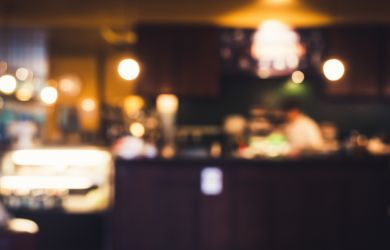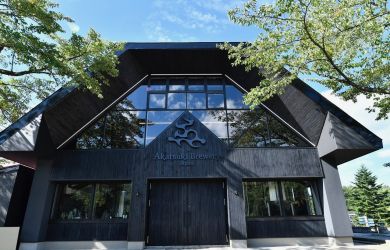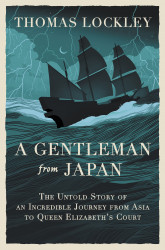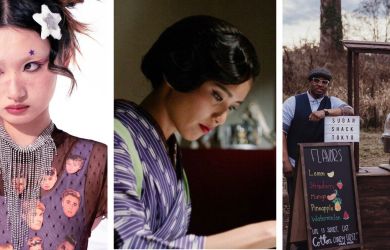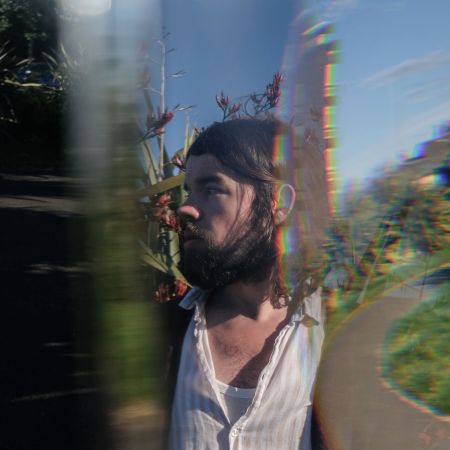
September 3, 2020
Andrew Wasylyk: Fugitive Light and Themes of Consolation
Album review and interview with the Scottish multi-instrumentalist
As the first shadows of autumn fall over the long, strange, summerless summer of 2020, the arrival of Andrew Wasylyk’s Fugitive Light and Themes of Consolation seems perfectly timed for a period when armchair escapism and travel of the mind look likely to be the wisest (if not only) options for those with a case of the wanderlust blues.
The third in a trilogy of (almost completely) instrumental excursions through the landscape and architecture of Eastern Scotland, this album brings a fresh report from the spiritual journey he began on 2017’s Themes for Buildings and Spaces and continued on last year’s — Scottish Album of the Year Award shortlisted — The Paralian. Viewed as a whole they form an extended psychogeographic tone poem and tender paean to Caledonian topography that sings out with a sense of belonging and an openhearted willingness to share space, both physical and emotional, with anyone who will listen.
Across the 10 short pieces that make up Fugitive Light and Themes of Consolation, Wasylyk combines elements of jazz, modern classical, minimalism and folk with an exhilarating array of influences from far-flung times and places. Strict assignment of genre to this expansive and personal music is impossible and unnecessary, although perhaps soundtrack is the most useful label that could be tentatively applied.
Fans of John Cameron’s beautiful airy accompaniments to Kes, Francis Lai’s intoxicating romantic melodies or the dappled melancholy of Badly Drawn Boy’s About a Boy soundtrack will find things here to move them in similar ways, while an occasional but persistent undercurrent of tingling otherworldliness bringing to mind the themes of eerie British children’s programs of the 1980s, such as “Chocky,” “Moondial” or “The Box of Delights,” means that tonally the album is far from being a one note reverie.
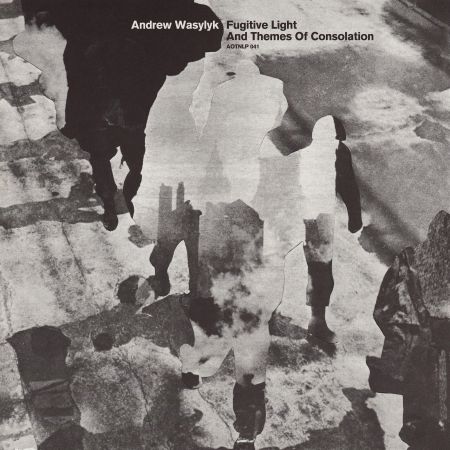
The album opens with the stately first-light piano chords and strings of “A Further Look at Loss,” the harmonies of which carry an echo of Pink Floyd’s “Breathe,” especially when the bass and drums arrive. Any ghostly imprint of that song’s very first lines — “Breathe / breathe in the air / don’t be afraid to care” — wouldn’t appear too far out of step with the music and messages of Fugitive Light and Themes of Consolation.
Lead single “Last Sunbeams of Childhood” has a first-chill-in-the-air lens flare charm that evokes images of the happy children and brownstone houses of 1970s “Sesame Street.” The intentionally off-kilter mix of electric piano and guitar, combined with a shuffling beat and submerged, almost inaudible, vocals should appeal greatly to fans of fellow Scottish act Boards of Canada.
“Fugitive Light, Restless Water” builds from almost ambient beginnings to a romantic swirling midsection of harps and violins and ends with a melody (fittingly) reminiscent of Marvin Hamlisch’s heartbreaking theme to The Swimmer set against a backdrop that is atmospherically similar to DJ Shadows “Building Steam With a Grain of Salt” (largely sampled from Jeremy Storch’s “I Feel a New Shadow”).
Across the the whole album particles of soul and funk drift into unexpected places; songs that initially bring to mind the meditative cold-climate jazz of ECM Records, or the sparse arrangements of Michael Nyman, find themselves transformed by bursts of brass or strings — as if snatches of Curtis Mayfield or The Stylistics have been picked up and brought cross-country by the wind, arriving slowed and distorted but with cheery musical serendipity.
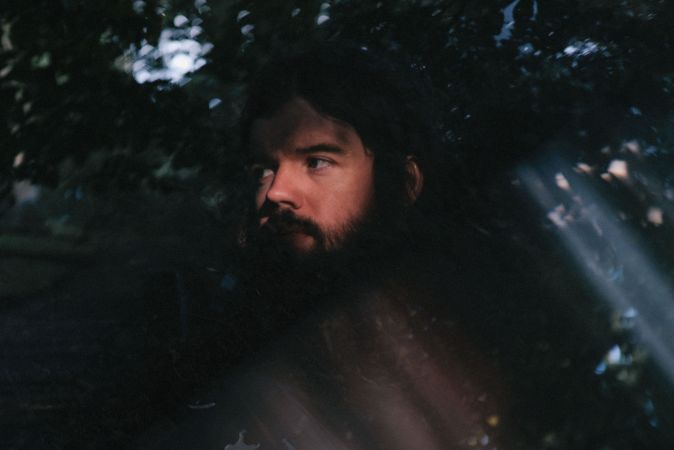
Highlights include (but are not limited to) the dense and heady opiate-tango of “In Balgay Silhouettes” that uses a “Putting on the Ritz” / “Clint Eastwood” rhythm to sinister enchanted effect; “Everywhere Something Sublime” that lives up to its title — twinkling hypnotically like reflected light on water, and “(half light of) the Cadmium Moon,” which begins with simple interlocking Japonesque piano lines and then conjures lung-busting panoramas with its sweetly sad and stirring strings.
With an admirable purity and generosity of spirit, Wasylyk has painted us a series of small pictures that together show us something of the bigger picture. The listener, lost in contemplation, may be surprised as the album-closer, the pink-hued “Lost Aglow,” draws to a somewhat abrupt close, and they find themselves still where they were just 10 songs and a little under 40 minutes ago, the journey completed.
Metropolis spoke with Scottish multi-instrumentalist Andrew Wasylyk, in a recent email interview, about his new album and finding inspiration in his hometown of Dundee.
Metropolis: Andrew, can you tell me about your journey as a musician? Your background and your upbringing.
Andrew Wasylyk: I have memories of dabbling with violin and cello around eight years old. Sadly, neither stuck and were soon eclipsed with a burning desire to follow in my older brother’s footsteps as a footballer. It wasn’t until my uncle gave me a guitar (an 80s Fender Stratocaster I still use) at 16 that I dared contemplate anything other than listening to cassettes of Crystal Gayle, The Beatles and DJ Carl Cox. As I left school in the summer of 1999 my friends and I were unearthing new discoveries: Olivia Tremor Control, Gang Starr, Fairport Convention, Cannonball Adderley, Pavement and Salsoul Orchestra. Anything we could get our grubby mitts on, really. A door had opened and a mysterious universe had asked us in.
Around this time I started an indie-pop group, The Hazey Janes, with my brother-in-music, Matthew Marra. In the ensuing years the experiences the quartet shared helped shape me as a young adult. THJ have had a lot of adventures since those informative days: eight albums, numerous UK tours, South By Southwest performances and supported Wilco across Europe. My role on guitar and keyboard would invariably inform a lot of my own practice and approach as a musician. Particularly, as I went on to write, record and tour on my own, as well as working with other artists, such as Electric Soft Parade, School Of Language, Idlewild and Deacon Blue.
In 2014, friend and musician Raz Ullah and I began Art Of The Memory Palace; an experimental-duo which has resulted in two albums and an EP that exist somewhere between Psychedelic Krautrock and drone. It’s a relationship where we’re often coaxing one another into unfamiliar territory. For example, take the 25-song, French thriller soundtrack and the 10-minute orchestral-drone composition with writer James Robertson we released.
I’ve also been fortunate to collaborate with visual artists, choirs, playwrights and choreographers. More recently, this led to an EP release of five minimal pieces for voice and piano with former makar (National Poet of Scotland), Liz Lochhead. Working with Liz again was a privilege. For me, she’s a maverick and an inspiration. I’m grateful to have kept productive on a regular basis in recent years. It’s important to ensure such opportunities aren’t taken lightly.
A few solo projects later, I wrote and produced an album, The Paralian. A coastal study, of sorts. Somehow, this wound up being shortlisted for Scottish Album of the Year Award, 2019.
That roughly about sums up my path to date.
M: Your new record, Fugitive Light and Themes of Consolation, is your fourth LP. How has your approach and sound changed over the years?
AW: I’ve tried to maintain a certain amount of continuity in my approach to working mostly every day, in some shape or form. I don’t know exactly how much of that seeps into the music, but if you’re chapping at the door on a regular basis, eventually, something positive tends to show up. With each solo album, investigating unexplored territories, musical nooks and crannies, is certainly something I’ve arrived at and would like to try and continue to pursue. That might mean delving deeper into the instrumentation of an arrangement, perhaps it’s peeling layers away to fresh, new minimalism. Whether the intention’s achieved or not, again, some sort of goodness can be found in the debris. It’d be nice to think that sentiment has allowed space for an arc of evolution across the identity of those works; that there’s maybe enough variation to provide a shade personal to each listener. I am a serial wishful thinker, however.
M: You’re influenced, heavily, by Dundee and the architecture and history found there. Is location important to you as an artist?
AW: Themes for Buildings and Spaces and The Paralian drew on architecture, urban decay and the North Sea, and although both began life as commissioned projects I think they each grew beyond my initial intentions. They evolved into opportunities to magnify aspects of areas/locations I’d either overlooked, or maybe hadn’t quite appreciated enough.
Dundee’s a very different place than the one I was born in at the tail end of winter, 1982. Personally speaking, I’d say living here has supported my development as an artist in different ways. Comparatively, it’s reasonably affordable. Or, at least, is for the time being. Geographically, we may be in the Lowlands, but we’ve a door to the Western Isles, a window east to the North Sea and keys to the breathtaking beauty of the north. I think that’s a pretty healthy place to observe the world. I realise it’s not without its issues, of course. That there’s many people in the city who still need better support from the system. However, I do believe there’s a growing democratic spirit here, which is important and encouraging.
As far as influences go, ultimately, I’d be a wee bit wary of relying on a single characteristic to lean on. It may sound trite but, listening and learning is an infinite journey. It’s also a tool that can help reduce the constrictions of things like your location when trying to be creative.
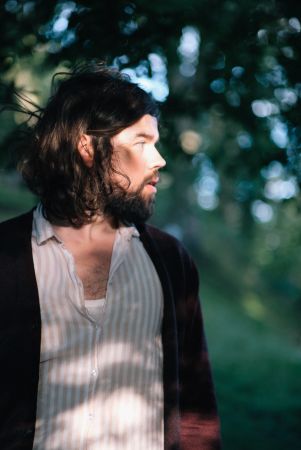
M: How would you describe the influences behind and the sound of the new album?
AW: Sonically, I think one of the main composites is probably the result of me working within my own limitations. For instance, aside from brass, woodwind and strings, the only other musician on the album is myself. Not in some gross display of virtuosity (I couldn’t even if I wanted to) but, more time and economy. Don’t get me wrong, I’ve always liked the idea of recording with a larger ensemble but, unfortunately, it’s not often practical. Particularly, in light of recent events. I guess for the time being the idea of tracking the body of an arrangement with this approach does also present a particular sound. For better, or for worse.
I’d say there’s a wide thread of inspiration from people, place and musical lineages running through the album. Virginia Astley, David Axelrod, Alice Coltrane, John Barry, Alasdair Gray, Les McCann, Art Farmer.
M: You have been to Japan before. What were your impressions of the country and has it had any influence or inspiration on your music or outlook on life?
AW: I don’t think I’ll ever forget the journey. As the coast and paddy fields pulled towards the airplane window I felt 10 years old with a bellyful of excitement. An otherworldliness that soon became one of the most magical experiences I’ve had. From rattling around on the Tokyo subway, it’s wee, hidden jazz bars, temple-sunsets in Kyoto, Osaka bullet trains and midnight walks through warm, pouring rain; to the architecture, the heart-fluttering-delicious food and the people I was fortunate enough to meet. All extremely generous, polite, gentle and funny. I’m grateful to have had the opportunity, to feel immersed in such a beautiful culture was very special. We have some Japanese-inspired architecture right here in Tayside too, in the form of Kengo Kuma’s wonderful V&A Dundee design museum. Sometimes, it helps me daydream back into the joyous feelings that that trip brought my friends and I.
I’m a big fan of Yellow Magic Orchestra, through to Ryuichi Sakamoto’s solo piano work. There isn’t much of Cornelius’ output I don’t love. I remember hearing Fantasma as a teenager. It excited and confused me in equal measures. Thanks to The Pastels I also adore Tenniscoats. I now have a quiet ambition of one day, somehow, coaxing Saya and Takashi (Tenniscoats) and Katrina and Stephen (The Pastels) to collaborate with me on something musical. I wonder if we could do it at Jim O’Rourke’s house? Jim’s the best. More recently, I’ve really been enjoying my copy of J. Jazz: Deep Modern Jazz From Japan, 1969-1984. It spans a pretty fascinating, innovative and transitional period for the genre and the movement that was heating up at that time.
M: There seems to be a lot of instrumental music coming out from Scotland. Is there any reason for this? Atmosphere, surroundings?
AW: I agree, there’s some great artists doing really creative work in this field, as well as on the fringes of instrumental music. Kinbrae, Tommy Perman, SHHE, Anna Meredith, Aidan O’Rourke, Ela Orleans, Bill Wells, Kathryn Joseph and Erland Cooper spring to mind. Free Love, too for that matter.
I wouldn’t want to assume too much about artists’ motives behind a piece of work, but if you live in Scotland you don’t have to travel far to be rewarded with some sort of life-affirming landscape, loch or munro (Scottish mountain). The same consolation could be drawn from having the North Sea and the promise of the Atlantic over your shoulder. Of course, not everyone has access to such things, but the romanticism of their beauty and the isolation (perhaps even desolation), in the right hands, they’re evocative and intoxicating imagery. I don’t know, maybe it’s just a case of all roads leading back to Boards of Canada.
Visualizza questo post su Instagram
M: We have asked many musicians over the past six months or so how the COVID-19 pandemic has altered their lives, their approach to music and their futures. Could you tell me how it has an effect on you?
AW: In terms of live performances, I’ve had a few tours rescheduled to 2021 and it’s looking an awful lot like this will be the quietest year I’ve had in a long time. There’s a couple of projects I’m currently distracting myself with, but it’s a challenging time for sure. I think the UK Government’s handling of the management has only exacerbated the chaos and lack of clarity. As far as the music industry ecosystem goes, as well as artists/labels/print media, I also really feel for all the freelancers who make live events happen; crew, security, engineers, tour managers, agents, electricians, techs etc., whose work has disappeared and is, essentially, banned with no clear guide as to when it may reappear.
I hope this period maybe provides us all with the space to reflect and readdress certain aspects of our world. Crucial issues like the climate crisis, globalization and Black Lives Matter. Within our own lives too, to take stock of the pace we move at, the nature and the effect those steps have on our societies. Generally, however, I feel very fortunate compared to what some have had to endure. After all, people have lost loved ones and had their lives turned upside down.
M: Did the Independence referendum and Brexit have any effect on you as a Scottish artist?
AW: Unfortunately, there isn’t much I can share in the form of positivity towards the outcome of either. I may have been encouraged to focus on work, but was probably more grappling for some small act of positivity and distraction. Of course, the irony being that Brexit is currently shrinking and diminishing the touring musician’s horizon.
Lately, we’ve seen television crews gratuitously following vulnerable humans in distress trying to cross the English Channel. Degrading and dehumanizing acts. For me, on many levels, it’s all a very sad and sorry precedence of what leaving Europe has in store for this island. The idea of continuing to learn and talk about a more inclusive and a multicultural society, where vibrant children blossom into empathetic humans, is a positive one to me. I’m afraid I don’t associate those sentiments with the quirky portmanteau of Brexit. Sadly, I envisage the opposite being encouraged by it.
M: Could you tell me about the new album? The concept, inspiration behind it and your personal goals for it?
AW: Writer Rob. St. John described Fugitive Light and Themes of Consolation as a “return upriver, drifting back inland along the River Tay’s inner estuary: a record of the low light on winter fields, empty suburban streets at dawn… circling landscapes for meaning, channelling half-heard melodies and misremembered memories; caught somewhere between settling down and setting out towards the shining levels of the estuary and beyond.” I’d agree with that and add it’s a natural tangent to The Paralian. And while they may share some common ground I’d have hoped it’s an extension to a denser, richer place, where shifts of texture and detail differ to its predecessor.
While directing the videos for “Last Sunbeams Of Childhood” and “Awoke In The Early Days Of A Better World,” my pal and artist Tommy Perman and I got to discussing youth, nature and light as markers for our collaboration. Three symbols of optimism for the future. I would love it if the album echoed that ethos in places, and it came across in the listener’s journey.
String arranger Pete Harvey’s ear and perspective is an important piece of the picture too. Pete worked on “The Paralian” and his beautiful orchestrations feature on half of this new album. Thank you, Pete.
I’m a wee bit suspicious of goals. I tend to tiptoe around them. For someone like me, they’re liable to lead to distraction or disappointment.
M: Do you have a message for your Japan-based fans?
AW: The idea that there might be someone sitting at home in Japan listening to my music is deeply humbling to me. If that’s you, then thank you and arigatou gozaimasu. I live in the hope that one day soon I can maybe come and perform some of this music for you. That’d be really something. Be safe, well and good to one another.
Pre-order a digital copy of Fugitive Light And Themes Of Consolation on Bandcamp.


